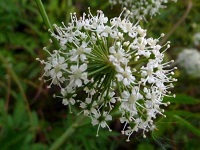Neuro-pharmacological, analgesic and anti-inflammatory effects of crude extract of Cicuta virosa
Keywords:
Cicutavirosa, anxiolytic, analgesic, anti-inflammatoryAbstract
Cicutavirosa is commonly known as Water Hemlock and traditionally known as poisonous plants. In the present research work central nervous system (CNS), analgesic and anti-inflammatory effects were assessed in mice and rats. The crude extract showed anxiolytic response at 100 mg/kg which was evaluated through open field, head dip, light and dark, cage cross and swimming test. In open field (73.33±3.28) and light and dark test (time spent in light 5.16±1.07 min.) the movements of mice were increased as compare to standard drugs, whereas in forced swimming test (FST) themean forced mobility was reduced to 1.16±0.02 seconds. At the dose of 500mg/kg of C. virosa, CNS inhibition was observed in cage cross test and dip cage activity. The results of locomotor and exploratory activity were also found reduced in comparison to control and standard Diazepam (2 mg/kg-1). Analgesic activity was evaluated by acetic acid and formalin method. The abdominal constrictions were observed. C. virosa at the dose of 50 mg/kg exhibited maximum inhibition of writhes, in first phase (57.67%) second (3.26%) and third phase (0%). The results of analgesic activity was compared with aspirin (orally administered, 300 mg/kg). C. virosaalso significantly inhibited formalin induced licking and biting response at the dose of 50mg/kg. Anti-inflammatory effect was observed by carrageenan induced edema at 300 and 500 mg/kg doses of C. virosa. Maximum inhibition of edema was observed at 500mg/kg (23.07%). The results of neuropharmacological, analgesic and anti-inflammatory activities of C. virosawere found significant at P ≤ 0.05.
References
Uwai K, Ohashi K, Takaya Y, Oshima Y, Furukawa K, Yamagata K, Omura T, Okuyama S. Virol A, a toxic trans-polyacetylenic alcohol of Cicuta virosa, selectively inhibits the GABA-induced Cl (-) current in acutely dissociated rat hippocampal CA1 neurons. Brain Res. 2001, 19; 889(1-2):174-80.
Strauß U, Wittstock U, Schubert R, Teuscher E, Jung S, Mix E. Cicutoxin from Cicuta virosa: a new and potent potassium channel blocker in T Lymphocytes. Biochem Biophys Res Commun; 1996, 219: 332-336.
Kazakhstan M, Ishmuratova T, Ozek G, Ozek KHC. Chemical composition of the oil of Cicuta virosa L. Planta Med; 2011, 77: 1300-1300.
Farah- Saeed. Studies on Allopathic and Homeopathic drugs used for the treatment of renal failure especially dialysis patients. 2014.
Irwin S. 1964. Drug screening and evaluation of new compounds in animals; In Animal and Clinical Pharmacology Techniques in Drug Evaluation (Nodine JH and Seigler PE eds.) pp. 55 - 68. Yearbook Medical Publishers, Inc, Chicago. J. Pesticide Sci. 2006. 31 (1): 29-34.
Kennett GA, Dickinson SL. and Curzon G. Enhancement of some 5-HT depressant behavioral responses following repeated immobilization in rats. Brain Res.1985, 330: 253-263.
Turner RA. 1965. Anticonvulsant In: Screening Methods in Pharmacology, Academic Press, New York and London; pp. 64-69.
Bourin M., Hascoet M. The mouse light/dark box test. Eur. J. Pharmacol. 2003, 463: 55–65.
Sanchez-Mateo CC, Prado B, Rabanal RM. Antidepressant effects of the methanol extract of several Hypericum species from the Canary Islands. J. Ethnopharmacol; 2002, 79: 119-127.
Correa CR, Kyke DJ, Chakraverty S, Calixto JB. Antinociceptive profile of the pseudopeptide B2 bradykinin and receptor antagonist NPC 18688 in mice. Br. J. Pharmacol .1996, 117(3). pp.552-558.
Ojewole J. 2005. Anti-inflammatory, analgesic and hypoglycaemic effects of Mangifera indica Linn. (Anacardiaceae) stem-bark aqueous extract. Methods Find Exp Clin Pharmacol 2005, 27(8): 547.
Nwafor PA, Jacks TW and Ekanem AU. Analgesic and anti-inflammatory effects of methanolic extract of Pausinystalia macroceras stem-bark in rodents. Int. J. Pharmacol. 2007, 3(1):86–90.
Sanchez-Mateo CC, Bonkanka CX, Prado B, Rabanal RM. Anti-depressant properties of some Hypericum canariense L and Hypericum gtandulosum Extracts in the forced swimming test in mice. J. Ethnopharmacol; 2005, 97: 541-547.
Hunskaar S. and Hole K. The formalin test in mice dissociation between inflammatory pain. Pain 1987, 30: 103–114.
WeithmannKU, JeskeS andSchlotteV.Effect of leflunomide on constitutive and inducible pathways of cellular eicosanoid generation.Agent Actions.1994, 41:164–170.
Vinegar R, Trauz JFandSelph JL.Concurrent evaluation and resolution in an acute in ß ammatory model of rat carrageenan-induced pleurisy. ProcSoc Exp Biol Med.1973;143:711-4.
Nelson CL, Wetter JB, Milovanovic M, Wolf ME. The laterodorsal tegmentum contributes to behavioral sensitization to amphetamine. Neuroscience 2007, 146: 41–49.
Panter KE, Keeler RF and Baker DC. Toxicoses in livestocks from the hemlocks (Conium and Cicuta spp.). J. Anim. Sci. 1988, 66: 2407-2413.
Mulligan GA, Munro DB. The biology of Canadian weeds: Cicuta maculate L., C. douglasii (DC.) Coult & Rose and C. virosa L. Can J Plant Sci 1981, 61: 93-105.
Sarreveld E, Hope E. Cicutoxin poisoning (Water Hem¬lock). Neurology 1975, 25: 730-734.
Corner RW. Poisoning by British Plants. In: Res Medica – Journal of the Royal Medicinal Society. 1961, 2(4), p17.
Julian OA, Launay J. Psycho-pathological test on animals by reserpine and Cicuta virosa, according to the homeopathic laws of analogy and identity. J Am Inst Homeopath 1966; 59: 155–164.


